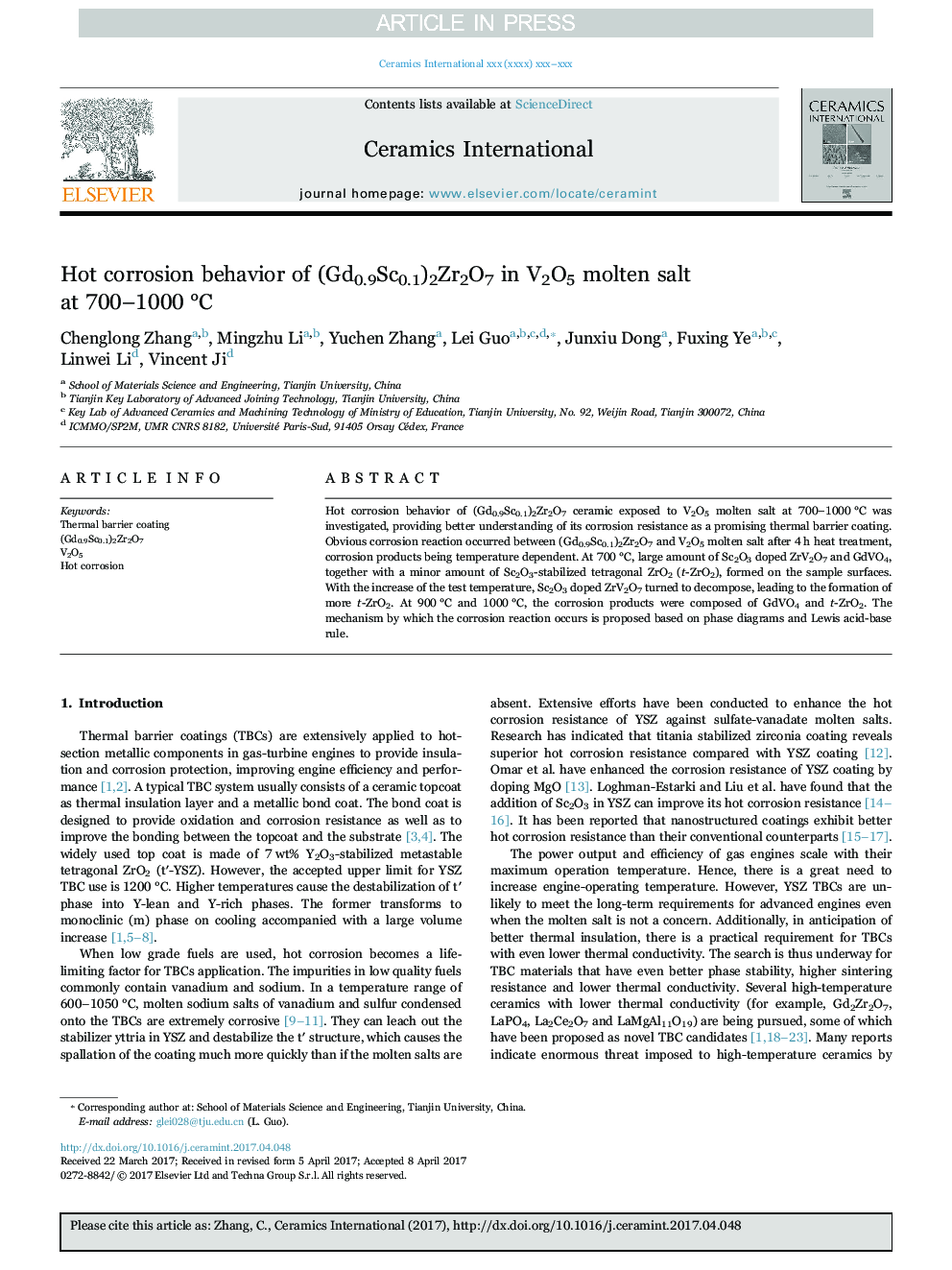| Article ID | Journal | Published Year | Pages | File Type |
|---|---|---|---|---|
| 5438376 | Ceramics International | 2017 | 6 Pages |
Abstract
Hot corrosion behavior of (Gd0.9Sc0.1)2Zr2O7 ceramic exposed to V2O5 molten salt at 700-1000 °C was investigated, providing better understanding of its corrosion resistance as a promising thermal barrier coating. Obvious corrosion reaction occurred between (Gd0.9Sc0.1)2Zr2O7 and V2O5 molten salt after 4 h heat treatment, corrosion products being temperature dependent. At 700 °C, large amount of Sc2O3 doped ZrV2O7 and GdVO4, together with a minor amount of Sc2O3-stabilized tetragonal ZrO2 (t-ZrO2), formed on the sample surfaces. With the increase of the test temperature, Sc2O3 doped ZrV2O7 turned to decompose, leading to the formation of more t-ZrO2. At 900 °C and 1000 °C, the corrosion products were composed of GdVO4 and t-ZrO2. The mechanism by which the corrosion reaction occurs is proposed based on phase diagrams and Lewis acid-base rule.
Related Topics
Physical Sciences and Engineering
Materials Science
Ceramics and Composites
Authors
Chenglong Zhang, Mingzhu Li, Yuchen Zhang, Lei Guo, Junxiu Dong, Fuxing Ye, Linwei Li, Vincent Ji,
